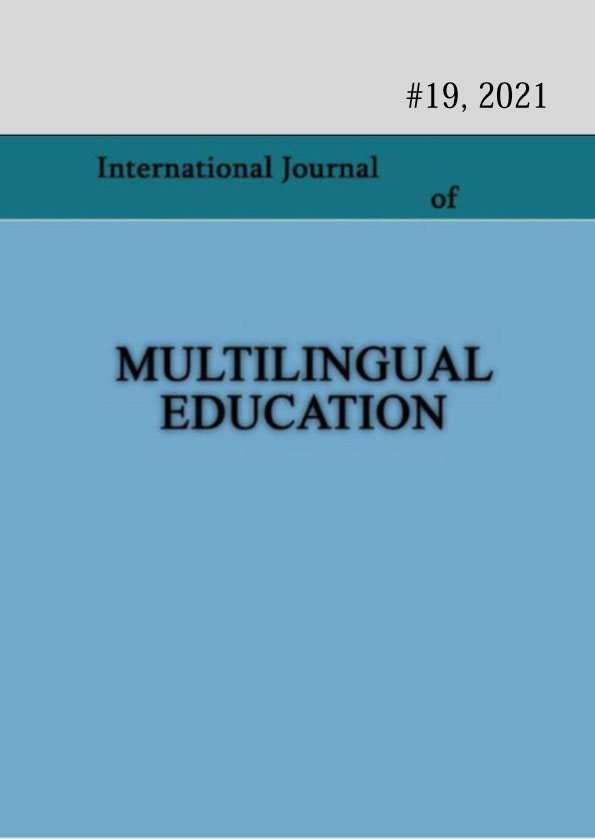Functions and Frequency of Using Code-switching in CLIL Lesson (Case Study, teaching Math (CLIL) in the private school, Tbilisi)
Keywords:
Attitudes, Bilingualism, Code-Switching, CLIL, Conversational analysis, Interactional Sociolinguistics.Abstract
The aim of the present study is to investigate the sociolinguistic functions and frequency of Teacher’s Code Switching (CS) in the content and language integrated (CLIL) Lesson. Furthermore, our purpose is to reveal students’ and teacher’s attitudes towards teacher’s code-switching in CLIL lesson. After a brief review of the literature concerning CLIL and the issue of code-switching the case study of teaching Math (Educational discourse) in one of the private schools in Tbilisi will be outlined as data, gathered by means of anonymous questionnaires, which were administered among students in the above- mentioned Math classes. Moreover, the qualitative research aims to single out the number of teacher’s CS examples and analyze the interview with math’s teacher. The results show that there are 36 cases of teacher using L1 (Georgian) in 10 lessons (9 hours). Math’s teacher’s CS behavior mostly serves (1) the conversational function of interjection; (2) the classroom functions of introducing unfamiliar materials and topics, explaining difficult concepts, maintaining classroom discipline and the structure of the lesson; The teacher and 13 students have negative attitudes towards using only Georgian in teaching Math’s. The higher level of English the students have the more negative is attitude towards using Georgian in the classroom. Although all the students were Georgian, their competence in English is almost as high as in their mother tongue, therefore they consider English as an inseparable part of their identities.
References
Auer, P. (1988). A Conversation Analytic Approach to Code-Switching and Transfer. Sonderdrucke aus der Albert- Ludwigs-Universitat Freiburg.
Auer, P. (1998). Code-switching in conversation: Language, interaction and identity, London & New York: Routledge.
Bailey, B. (2015). Interactional Sociolinguistics. University of Massachusetts, Amherst, USA. Cambridge: Cambridge University Press.
Canagarajah, S. (2007). Lingua franca English, multilingual communities, and language acquisition.
The Modern Language Journal.
Coyle D., Hood P., & Marsh D. (2010). Content and Language Integrated Learning. 2010.
Ferguson, G. (2009). What next? Towards an agenda for classroom codeswitching research.
International Journal of Bilingual Education and Bilingualism.
Gumperz, J. (1977). The Sociolinguistic Significance of Conversational Code-Switching, University of California, Berkeley.
Gumperz, J. (2002). Language and social identity. Cambridge University Press.
Hamers, J., Blanc, M. (2000). Bilinguality and Bilingualism, Second edition, Cambridge University Press.
Mayers-Scotton, C. (1993). Social motivations for codeswitching: Evidence from Africa. Oxford: Clarendon Press.
Published
How to Cite
Issue
Section
License
Copyright (c) 2021 Khatuna Buskivadze

This work is licensed under a Creative Commons Attribution-NonCommercial 4.0 International License.
Copyright (c) - Authors who publish with this journal agree to the following terms: Authors retain copyright and grant the journal the right of first publication with the work simultaneously licensed under a Creative Commons Attribution-Noncommercial 4.0 International License, which allows others to share the work with an acknowledgement of the work's authorship and initial publication in this journal. Authors are permitted and encouraged to post their work online (e.g., in institutional repositories or on their personal website) prior to and during the submission process, as it can lead to productive exchanges, as well as earlier and greater citation of published work (see The Effect of Open Access). Authors may enter into separate, additional contractual arrangements for the non-exclusive distribution of the journal's published version of the work (e.g., post it to a repository or publish it in a book), with an acknowledgement of its initial publication in this journal.

